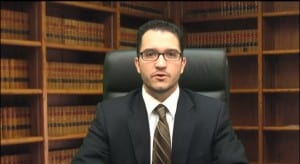 Paul O from Port Richey, Florida asks, what is a Discharge in a Chapter 13 Bankruptcy. The following video explains what is a Discharge in a Chapter 13 Bankruptcy. Discharge in Chapter 13 is described in Section 1328 of the Bankruptcy Code. Section 1328(b) provides for a Hardship Discharge.
Paul O from Port Richey, Florida asks, what is a Discharge in a Chapter 13 Bankruptcy. The following video explains what is a Discharge in a Chapter 13 Bankruptcy. Discharge in Chapter 13 is described in Section 1328 of the Bankruptcy Code. Section 1328(b) provides for a Hardship Discharge.
Section 1328(e) and 1328(f) of the Bankruptcy Code discuss instances in which a Discharge may be Revoked.
A Discharge in a Chapter 13 Bankruptcy generally provides that certain Claims are paid, or satisfied in full, through the execution and completion of the Chapter 13 Plan. All Claims that are the same, in Bankruptcy, must be treated similarly, but different types of Claims may be treated differently from each other.
For example, Credit Cards and Medical Bills are generally treated in a Chapter 13 Bankruptcy as General Unsecured Debts. A Chapter 13 Plan may offer to pay anywhere from 0% to 100% of the monies owed to the General Unsecured Creditors. If a Plan is approved or Confirmed by the Bankruptcy Court, and completed by the Debtor, that pays, say, 20% to the General Unsecured Creditors, then each of the General Unsecured Creditors must receive 20% of the monies owed at the time of the filing of the Chapter 13 Bankruptcy.
That same plan may pay 100% plus Interest to the Internal Revenue Service. However, the Chapter 13 Plan may treat the Internal Revenue Service differently because debts owed to a Governmental Entity are generally a different Classification of Claim than Medical Debts or Credit Card Debts. Such Tax Debts may be further Classified as either Priority, Secured, or Unsecured, depending on the type and age of the Tax Debt, and other criteria.
Mortgages on Real Property are another type of Debt. One may pay the Arrearages on their Homestead, for example, but still owe monies on their Mortgage after the completion and Discharge of their Chapter 13 Bankruptcy.

